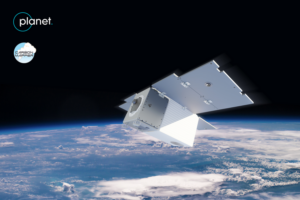Private sector seeks bigger role in NASA Earth science programs
By Jeff Foust

WASHINGTON — Companies and organizations used a House hearing May 18 to advocate for a larger role in NASA’s Earth science programs, arguing their capabilities can complement NASA spacecraft.
The hearing by the House space subcommittee on NASA’s Earth science programs devoted much of its attention to how commercial Earth imaging spacecraft could supplement NASA missions to study climate change, a growing priority for both the agency and the Biden administration.
“As NASA is creating its next flagship missions, including the Landsat Next program, NASA should incorporate the planned, viable commercial capabilities into their procurement strategies and seek commercial capabilities as a forethought, rather than an afterthought,” said Robbie Schingler, co-founder and chief strategy officer of Planet.
NASA and the U.S. Geological Survey (USGS) are, under Landsat Next, studying architectures for future Earth science satellites to follow Landsat 9. The agencies have said they are open to approaches far different from the traditional designs of single large spacecraft, but Schingler said in his written testimony that the government has offered mixed messages in recent requests for information “that favor a more traditional and expensive architecture toward large satellite designs.”
He said NASA should be thinking about how to fill data gaps in a “system of systems” that includes both its own spacecraft and Europe’s Copernicus series of Earth observation missions, something that he said could be done with commercial spacecraft. “At this early stage of a procurement strategy, we do urge this committee, and NASA and USGS, to open up the aperture and to consider more novel and innovative approaches toward the next-generation Landsat Next program.”
An example of a novel and innovative approach highlighted at the hearing is Carbon Mapper, a public-private partnership that includes Planet, NASA’s Jet Propulsion Laboratory and the state of California. The project, announced April 15, will place a series of satellites in orbit to track emissions of greenhouse gases.
Riley Duren, a research scientist at the University of Arizona and chief executive of Carbon Mapper Inc., the nonprofit organization leading the project, said at the hearing that the project will provide data to identify “superemitters” of methane and carbon dioxide, such as pipeline or tank leaks.
“This suggests low-hanging fruit, if you will, for near-term progress,” he said. “The idea here is that a high-fidelity constellation of satellites could offer daily facility-scale methane monitoring over key regions globally to alert operators and regulators of leaks in the most timely and cost-effective way.”
He noted that, like NASA missions, Carbon Mapper will make data freely available, leveraging the project’s philanthropic support. Planet, though, will be able to commercialize other applications of the data the project’s satellites collect, sharing revenue with Carbon Mapper. “It’s part of what’s innovative about this,” he said. “It will help address one of the challenges we face with federal programs, and that is continuity: how do you keep these observations going once you start them?”
Schingler also asked Congress to support NASA’s Commercial Smallsat Data Acquisition Program. Under that program, NASA purchases imagery and other data from commercial spacecraft for use by scientists. “My main recommendation for this committee in particular is to put into statute the Commercial Smallsat Data Acquisition Program and to robustly fund it,” he said.
That program is not formally authorized, and it is not included in a NASA authorization bill that the Senate Commerce Committee attached to a National Science Foundation bill May 12. That bill, now called the U.S. Innovation and Competition Act, is being debated by the full Senate this week.
Rep. Don Beyer (D-Va.), chairman of the space subcommittee, appeared open to including it, stating at the hearing that he hopes to take up a NASA authorization bill later this year.
Karen St. Germain, director of NASA’s Earth sciences division, said she supported greater partnerships with commercial providers. The agency has been working to negotiate, as part of commercial smallsat data purchases, licensing terms that will allow it to distribute the data not just to the agency’s own researchers but others as well.
“I couldn’t be more excited by the possibilities enabled by all of the growth in commercial Earth observation,” she said. “They absolutely complement our government systems and they expand the scope of the science that we can do.”
May 19, 2021 at 02:17PM
via SpaceNews read more...

Post a Comment